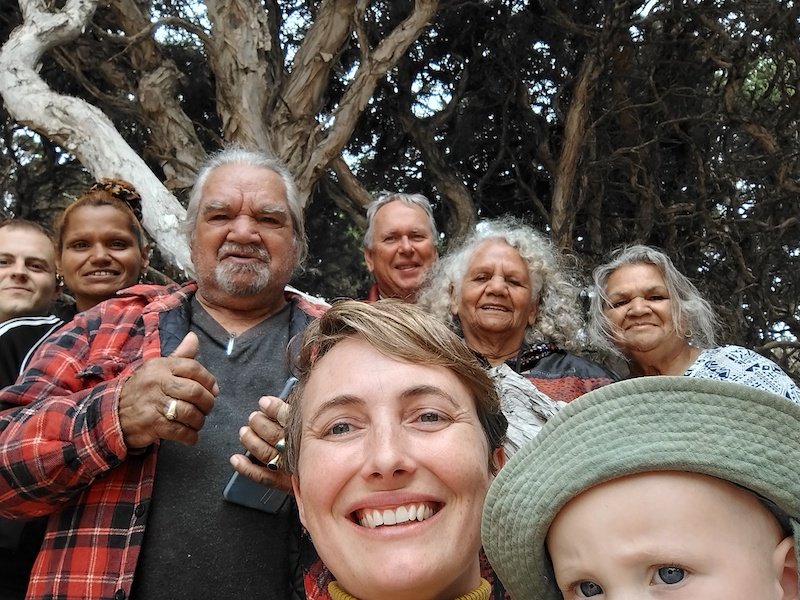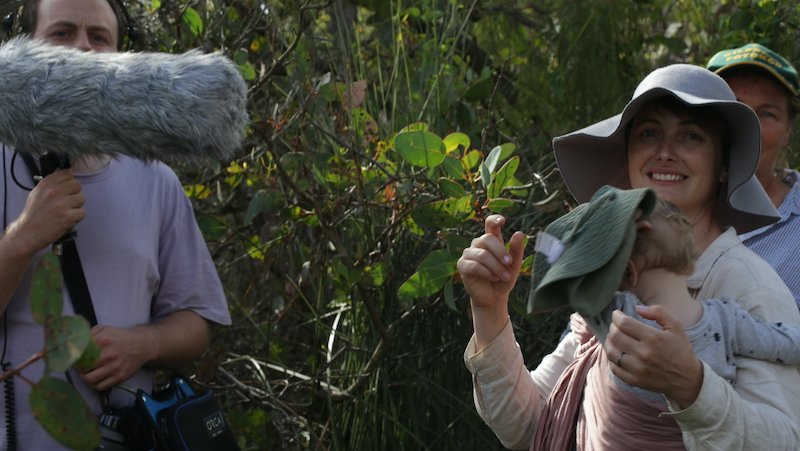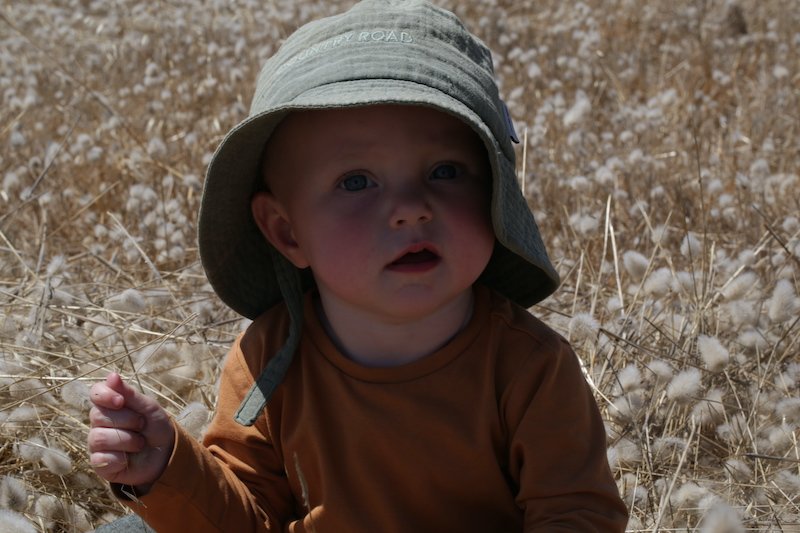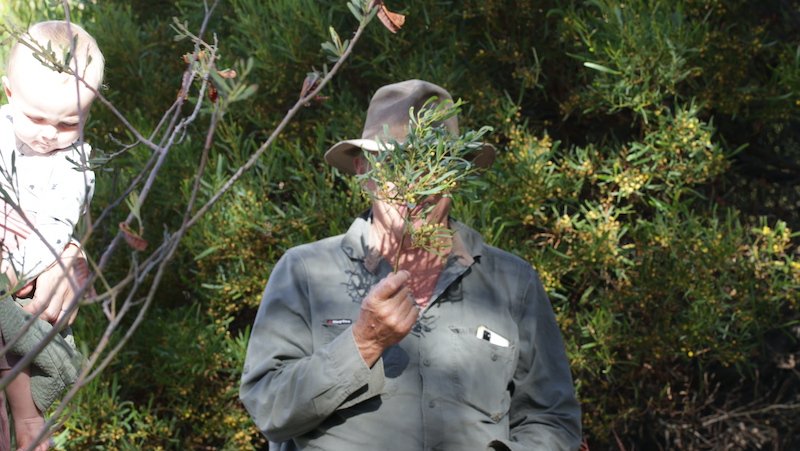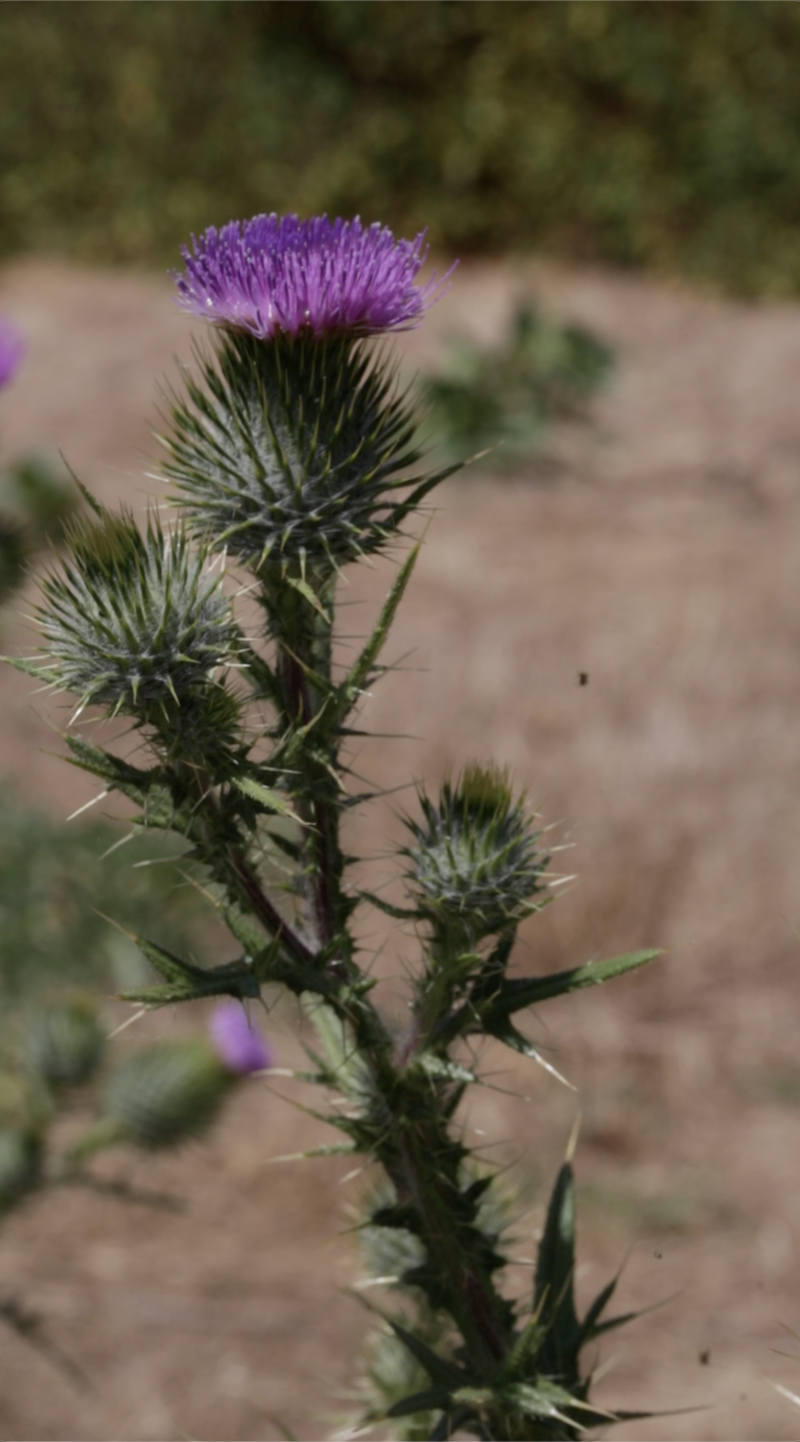Rural Utopias Residency: Elizabeth Pedler in Wellstead Stage 2 Reflection #4
Elizabeth Pedler is currently working with the community of Wellstead. This work is one of over ten, forming part of one of Spaced’s current programs, Rural Utopias.
An artist interested in the range of participation possible in art, Elizabeth's practice spans from playful and interactive installations to collaborative relational aesthetics. Identity, food, and community involvement are areas of particular focus, and have led to significant artistic development in her recent arts practice, engaging with audiences through the sharing of experiences and storytelling.
Here, Elizabeth shares an update from Wellstead.
17 – 23 February 2023
Week Four began at Windi Windi with a full house. Juno and I arrived on Friday late in the afternoon, with Josten pulling up soon after. We settled into the hut, and in the morning Richard, Josten, Juno and I drove over to House Beach, on Cape Riche, for an early morning swim before the wind picked up. The water was blue-green, glassy and calm, but cooler than Juno liked, and she climbed up towards my shoulders to escape the lapping waves. After we returned from the beach, grittier and cooler than when we left, more people began to arrive. First Kerry and Esmae pulled up to the hut to say hello. Then other visitors came too, Evelyn and her three teenage kids Mischa, Lars and Torbin out of Albany, then Rumi and Mandakini from Wickepin. By lunchtime it was a packed kitchen at the farmhouse, everyone filling the space around the table, balanced on chairs, stools, and exercise balls. I took Juno back to the hut for her nap, and then later we all went out with Kerry to move the herd of cows, and then collected together at the house as Josten, Kerry and Mandakini got dinner ready, and Juno was entertained by the older kids. But it was an early night for me, as I peeled Juno and I away early to put her down to bed, back at the hut.
On Sunday the house, which already seemed so full, became even more packed, as more people trickled in around lunchtime. Hugh, a friend of Richard and Kerry’s, pulled in on his way back from camping, and then Keith Bradby (Gondwana Link) dropped in, accompanied by Raquel and Andrew from Curtin’s ARC Training Centre for Healing Country. Keith, Andrew, and Raquel had already visited Sylvia Leighton at Wilyun Pools in the morning, where I was going in the afternoon. They’d come out to visit a few properties that were implementing strategies to support biodiversity, and blending farming with revegetation and conservation. Richard was taking them out to see the growth in the various revegetation sites at Windi Windi, but as lunch wore on, I realised it would be too late for us to join them on the tour. Josten and I nonetheless enjoyed the conversation, as Richard, Keith and Andrew passionately shared their perspectives on soil science and balancing agriculture’s social, environmental and financial impacts.
Sunday afternoon, Josten, Juno and I headed over to visit Sylvia Leighton and Peter Mackenzie at Wilyun Pools. After a little chat in the house, after which we were joined by Kerry and Esmae, we went out with Peter and Sylvia to some of the remnant bush that had escaped the clearing of the farm for pasture in the 1960s. While we sat down in a little open space, surrounded by acacias and eucalypts, Sylvia shared her memories of the bush as a girl, and how they would come to this spot for the weeping cherry tree (exocarpos), which they used sprigs of for Christmas decorations. She shared her knowledge about the biology of the cherry tree, and how its roots attach to those of nearby trees and bushes (like many other members of the sandalwood family). These roots appear at first to simply draw off nutrients parasitically, but upon closer inspection, are part of a network that communicates between plants, alerting neighbours to threats and allowing them to mount defensive measures. We later moved on to one of the revegetation sites, planted five years ago, that I had seen on an earlier visit. What last time was fairly open scrub was now shaded, cool and airy, with taller trees offering shelter and the gnarled bluegum stumps gradually rotting away. Smaller ground level sedges and creepers had moved in from nearby bush. The banksia baueri, also known as the teddy bear banksia, was in display at the edge of the reveg site, with young yellow flower heads in bloom, as well as older, massive fluffy grey flower heads, bearing more than a little similarity to the fluffy windsock of Josten’s shotgun mic. The plants that were so discreet and separate last time I visited, were now blending together, forming a tapestry in shades of green, grey and misty blue leaves over the red dirt. It was a reminder of how quickly these plants can take over, reclaim and transform what had once been cleared.
On Monday Josten and I met Minang-Koreng Noongar elders Eliza Woods, Aden and Annette Eades, and Steve Hopper from UWA, at the CRC in Wellstead. Eugene Eades had also hoped to come, but had called on Saturday to let me know he couldn’t be there, and instead his daughter, Angel, was there in his place. Josten and I followed Steve and the elders, as we made our way down a rutted dirt track on the Cape, and then pulled off to a campsite. We left my little car a bit up the track, so it wouldn’t get stuck, and Josten and I carried our gear for the last few hundred metres. By the time I’d arrived, with Juno on my hip and the camera and tripod over my shoulder, the others were already set up, seated under the paperbark trees in a half-circle, waiting for us.
Aden and Eliza shared their stories of coming to the campsite as children, pulling up periwinkles, or penny-winkles as they called them, and fishing the body of the mollusc out with a pin. When someone didn’t have a pin, they said the pin from a child’s nappy would be used. Of the plants around the site, the most significant were the paperbarks themselves, melaleuca cuticularis. The trees created dense shade and shelter, and windbreak against the sea breezes off the cape. Eliza and Annette talked about the use of the bark to wrap food in cooking and serving, and also how you could tap into the trunk of the tree, forming a wound to access moisture if you needed water desperately. We walked around the camp, and they talked about where different families set up their camps every year. Walking down the track, they led us to the well. First a natural soak used by the Noongars coming to the camp, after colonisation a well was built there with convict labour, with rough-edged square stones lining the sides. The water was quite low, but still visible about four metres down. The wide mouth of the well and trees crowding around the edges made me nervous. I was keen to stay back, as with Juno on my hip my balance was unwieldy, but the trees and bushes nearby were dense and cool. One of the ground covers had a strong lemony smell as we walked through. Walking back from the well, Annette and Steve talked about the plants and one particular bush, used to treat a bull-ant bite, known for the strong smell similar to cat piss. Annette also pointed out acacia cyclops, used for its seed to make little cakes cooked in the ashes of a fire. After lunch we headed back to town. We said our goodbyes at the CRC, then Steve drove them back to Albany.
Tuesday morning we began the day with a performance from Josten. After persuading him the night before to share his talents with the assembled visitors, he agreed to a 7am saxophone performance down at the hut. Juno, Esmae, Kerry and I sat down on a rug with some toys for the girls, while Rumi and Mandakini sat down on a couch, and Ralph (another arrival, who was helping Richard and Kerry manage the farm while they headed off for a few days) and his dog all sat down to listen. We were treated to a stream of experimental sound. The saxophone was at times offbeat, droning, spontaneous, and entrancing. Through the sound I could hear a flock of birds descending on a watering hole; a bull-roarer; a frenetic conversation; a whisper; a light flutter. At one point the saxophone connected with the shed, resonating and causing the structure to vibrate, enveloping us in a single tone. The river of sound seemed infinite, then before I knew what was happening, it resolved, settled, and closed out. The performance was a beautiful ending to the weekend with friends, as Rumi and Mandakini departed soon after to return to their property, Sacha Boodja, near Wickepin. Kerry, Richard and Esmae were also leaving that morning to spend a few days in Yallingup.
Later the same morning, Josten, Juno and I drove over to Hillsea, to have a chat with Craig Lock. I had interviewed Craig during the first residency, talking about water levels as he dredged mud from a dam. We have maintained contact, and I’ve often dropped in for a cup of tea in the late afternoon when I’ve been down at Wellstead. This time when I asked him about what plants were significant to his life on the farm, conversation turned to the weeds and the challenges of managing pasture for feeding the few thousand sheep on the property. Craig took us out to a paddock where they were pulling up wild melons, as well as inkweed (Phytolacca octandra) that was proliferating around the edges of a patch of bush that had survived clearing. He talked about how the bush, once a relatively healthy remnant that provided shade to sheep, now gets choked by weeds, and the trees are slowly dying. As well as the inkweed, a kind of eggplant was also growing, with long thing leaves and little yellow and green fruits the size of cherries. On the edges of the paddock Craig drew our attention to scotch thistles (Onopordum acanthium), the purple petals bursting forth on a pretty albeit dangerous looking bloom. Each of these weeds were being pulled by hand where possible, or in large stands, using a tractor to push them up out of the earth. We then drove over to a hilltop where pussy tail (Lagurus ovatus) completely covered the paddock, as far as we could see in any direction. Craig discussed how he’s been employing backpackers to pick bunches of the pussy tail and had a contract for ten thousand to sell to a florist. Even ten thousand bunches, of thirty heads each, Craig said would be just a tiny fraction, maybe five percent, of what covered the hillside. Pointing out the various weeds that he’s been fighting with, he laughingly expressed regret that we were missing out on seeing the pasture, that all we could see this time of year was the weeds.
Tuesday night Josten was all set to head out to Mettlers Lake to do some field recordings, but his car wouldn’t start. The next morning we sought some assistance with the jumper leads from Ralph, and two trips into Wellstead later, Josten’s car was going again. Late Wednesday afternoon we drove over to Mettlers Lake, and Josten carried his gear deep into the reserve to set up for an overnight field recording, while I captured video of the neighbouring bluegum plantation that towered over us, and Juno happily walked along the fenceline, holding onto the taut wire. Back at the hut, I spent some time cleaning up and packing, getting ready to leave, while the live microphones over at the lake recorded the evening song of waterbirds.
The drive back in the morning I was a bit anxious about Josten’s car. He left early to pack up the microphones left at the lake, while I cleared out the hut and then checked in with Ralph up at the house to let him know we were on our way. As Juno and I drove along Mettler’s Lake Rd, Josten’s car came out and we drove together into Albany. A short breakfast and a break for Juno, and then farewells, and Juno and I headed back north on the highway.
The week felt full, full of people and stories and places. I felt grateful to Sylvia and Peter, to Eliza, Aden, Annette, Angel and Steve, and to Craig, for taking the time to talk to us, sharing their stories about these plants, and about this place. To Evelyn and her kids, to Rumi and Mandakini and Ralph for their friendly conversations and smiles. But especially grateful to Josten, and to Kerry and Richard too, for making the busy week possible, for their assistance and support (not to mention delicious cooking), helping to shoulder the burden of making the project work in every sense.
Images 3-5 by Kerry DellAgostino.
All other photos courtesy of the artist.


